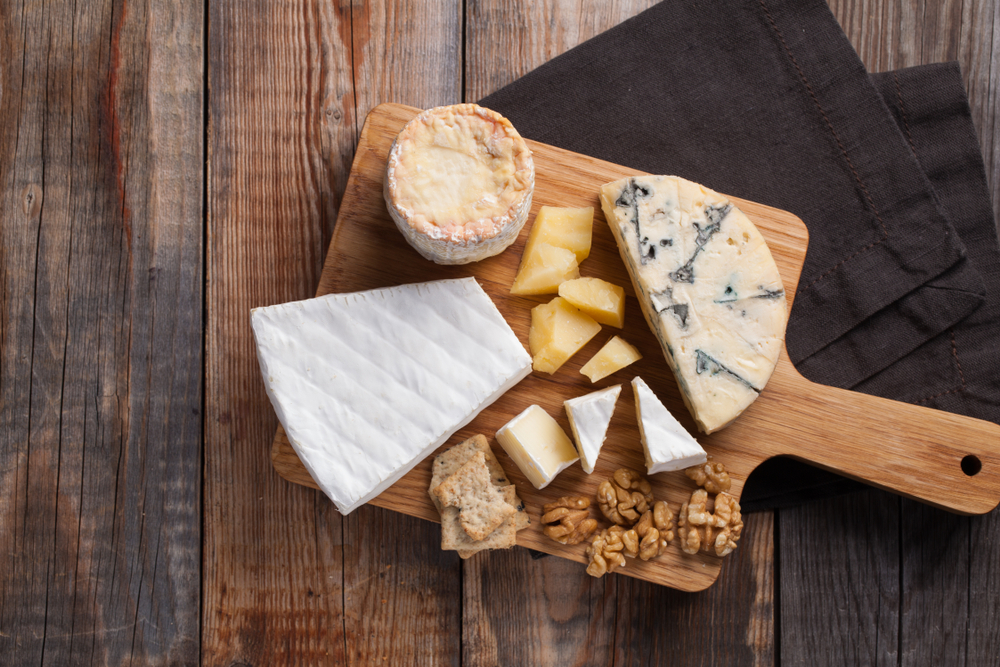Book A Table: 0207 132 1212
Monday to Friday: Lunch 12 to 3pm
Dinner 5.00pm to 11pm
Saturday and Sunday: 12pm to 11pm
Book A Table: 0207 132 1212
Monday to Friday: Lunch 12 to 3pm
Dinner 5.00pm to 11pm
Saturday and Sunday: 12pm to 11pm

Italy is a country known for its great variety of cheeses, from the familiar soft cheeses such as mozzarella and harder varieties like Parmesan, as well as some types that you might be less familiar with.
These cheeses all vary quite a lot, both in texture and hardness, as well as in the type of milk used, but most can usually either be eaten on their own or used in cooking.
Here’s a guide to just some of Italy’s most loved cheeses!
One of the better-known types of Italian cheese, mozzarella actually refers to a couple of different types of cheese, but it specifically refers to cheese which has usually been made from Italian buffalo milk and made using a spinning and cutting technique known as ‘pasta filata’.
This white, semi-soft cheese has a high moisture content and is most often used for pizza, lasagna or in a Caprese salad with tomato and basil.
This veined, blue cheese comes from unskimmed cow’s milk and is generally split into two varieties: Dolce (which is sweet) and the sharper Piccante (also known as Naturale, Montagna or Mountain).
Gorgonzola is often melted into risotto in the final stages of cooking but it is also popular with short pasta like penne or rigatoni, as opposed to long varieties of pasta such as spaghetti and linguine.
You may know this cheese better as ‘Parmesan’, which is the name given to the same cheese which has been made outside of a defined area in Northern Italy.
Parmigiano-Reggiano is the real deal, produced in Parma, Reggio Emilia, Modena and parts of Bologna and Mantua and is known for its flaky texture and rich flavour and it’s also been referred to as the ‘King of Cheeses’!
Pecorino actually refers to a whole family of cheeses, which are all made from sheep’s milk. The best known is pecorino romano, which is a hard, salty cheese, and one of the country’s oldest too.
It is most commonly used grated over pasta, soup and salad as a slightly sharper tasting alternative to Parmesan.
If it’s a table cheese you’re after, pecorino toscano and pecorino sardo are more suitable options.
You probably know this very rich-tasting cream cheese as one of the key ingredients in tiramisu, which is made by draining the moisture from the cream of cow’s milk through a finely woven cloth.
It’s a milky-white creamy cheese which is easy to spread and as well as being used in tiramisu, is sometimes used in cheesecake, or as a substitute for butter or Parmesan cheese to help thicken and enrich risotto dishes.
Ricotta is a whey cheese which is made from the whey left over from production of various other cheeses (ricotta literally translates to ‘recooked’).
The finished product is creamy white in appearance with a slightly sweet taste, although the exact texture depends on the type of milk used. Ricotta is also highly perishable, but there are ages varieties which last a lot longer.
This cheese is named after the Alpine valley of Val Taleggio in Lombardy where it is produced.
It’s definitely one of the smellier of the Italian cheeses, although it has a surprisingly mild flavour with a fruity tang that you might not be expecting.
Taleggio can be eaten with radicchio or rucola salads, with spices and tomato on bruschetta, or melted into risotto or on polenta.
Also known as crescenza, this rich and creamy cheese and is most comparable to Gorgonzola, although at room temperature it is much softer and more spreadable.
Produced from cow’s milk in the northern parts of Italy, it is usually eaten on its own but is also used as a filling in some breads.
The texture of this cow’s milk cheese varies, depending on how long it has been aged, starting out very smooth before ending up with a crumbly texture once it has fully aged.
Crumbly Asiago is often grated into a variety of meals such as salads, soups, pasta and sauces, while the creamy variety is used on paninis and sandwiches.
There are many similar varieties produced around the world in the US, but as a protected product, only that which is produced around the Asiago Plateau can truly be considered Asiago.
This semi-soft cow’s milk cheese has a mild and buttery taste and is most comparable to mozzarella, although it has come tang and body.
With a pale and creamy yellow colour, Bel Paese is mainly used as a snack or dessert cheese, although it is also melted for use with pizzas and in casseroles too.
Burrata refers to sacks of mozzarella which are filled with cream, giving it a unique texture. It’s usually eaten with 24 hours and often served with salad, prosciutto, bread and pasta.
At Bella Cosa, we make sure our menus feature the finest Italian ingredients from across Italy. Our new Spring menu features some of the freshest classics, along with some dishes you may not have tried before! Book a table online or give our friendly team a call!
We care what our customers think of us and so should you. We are partners in your business and your success is ours in your business.